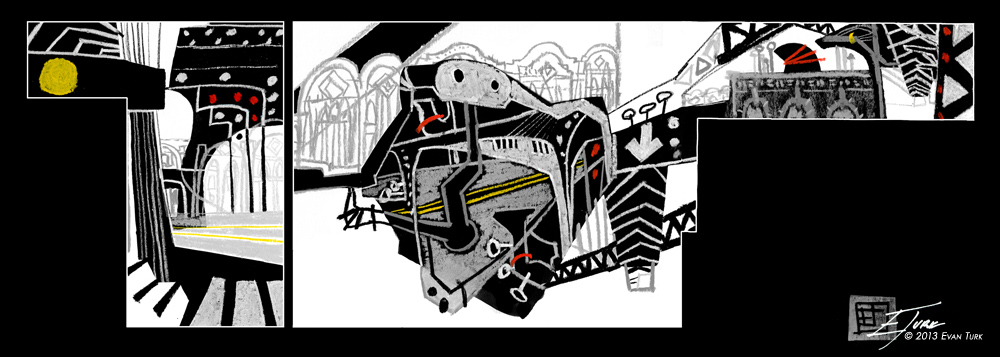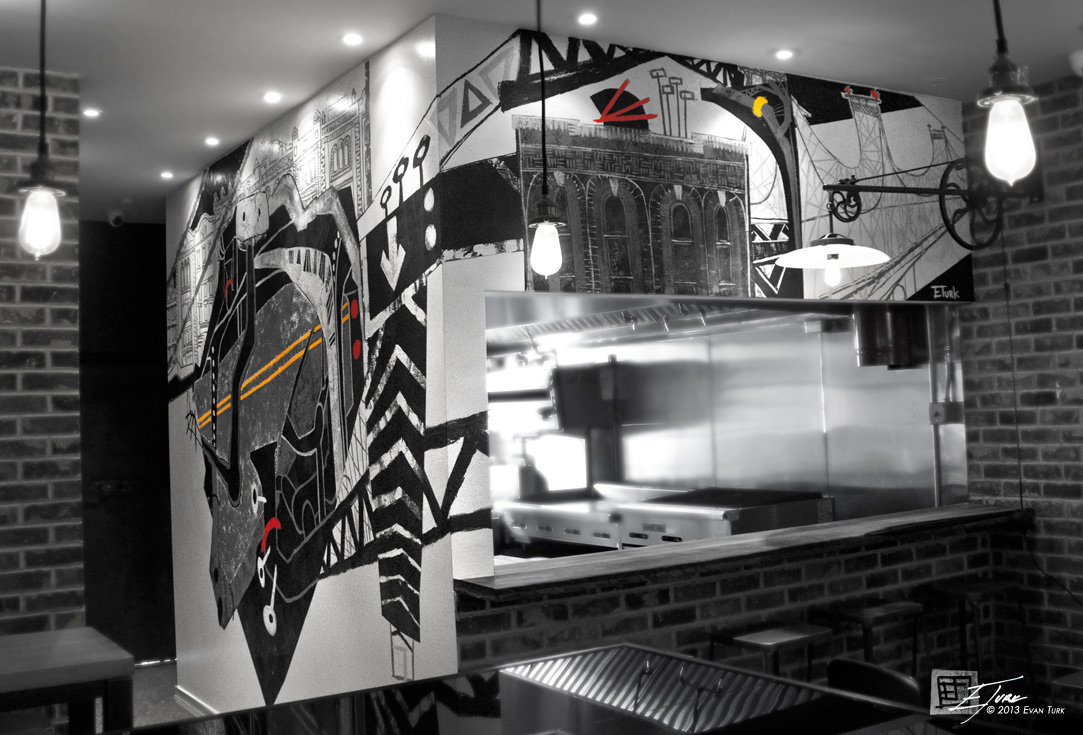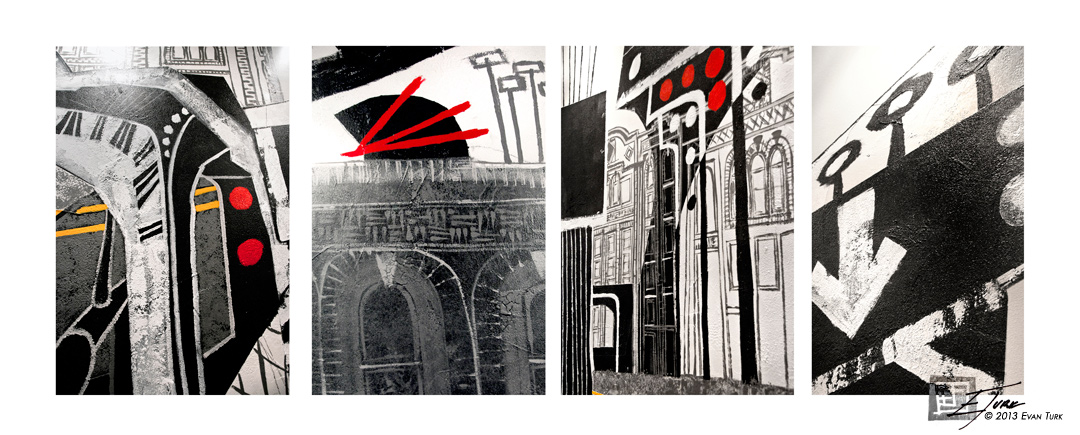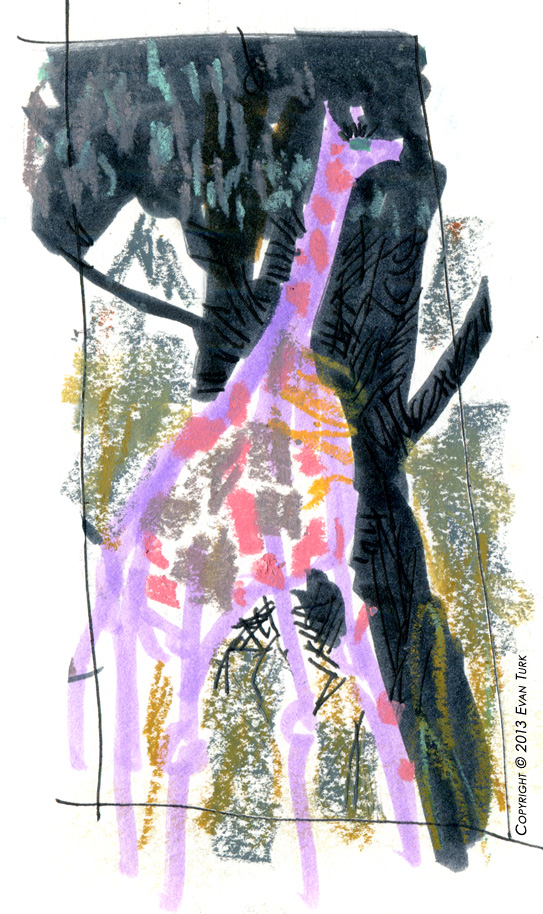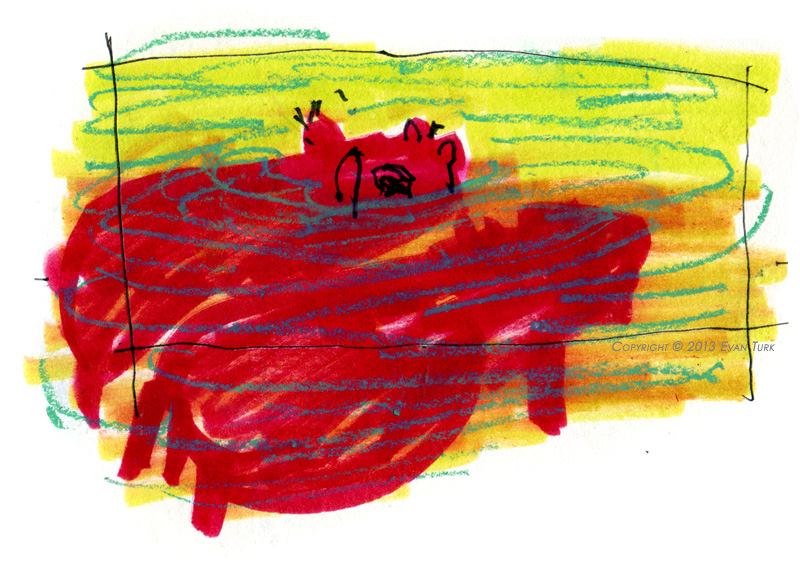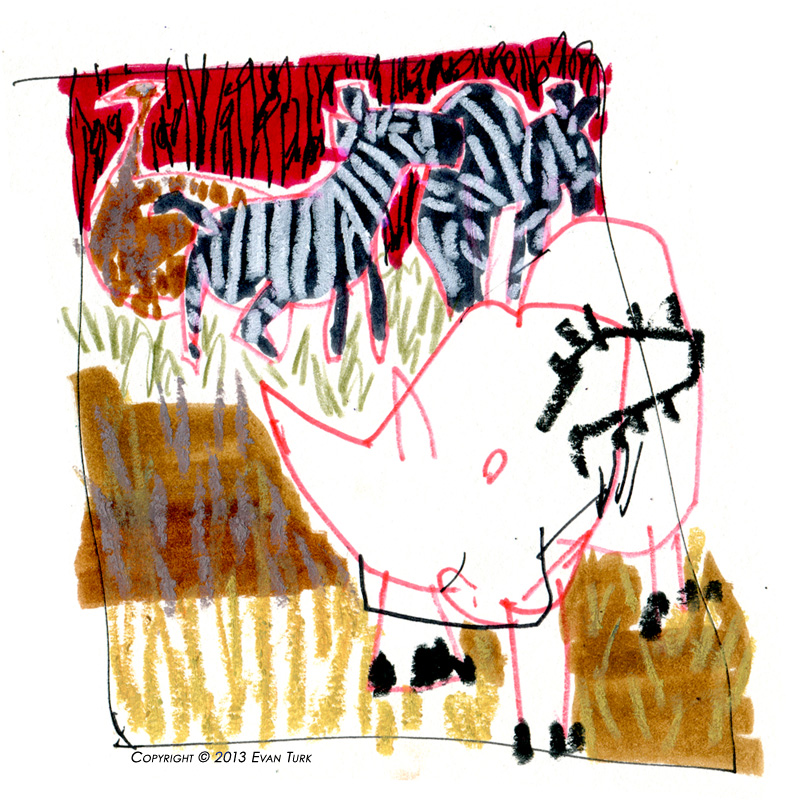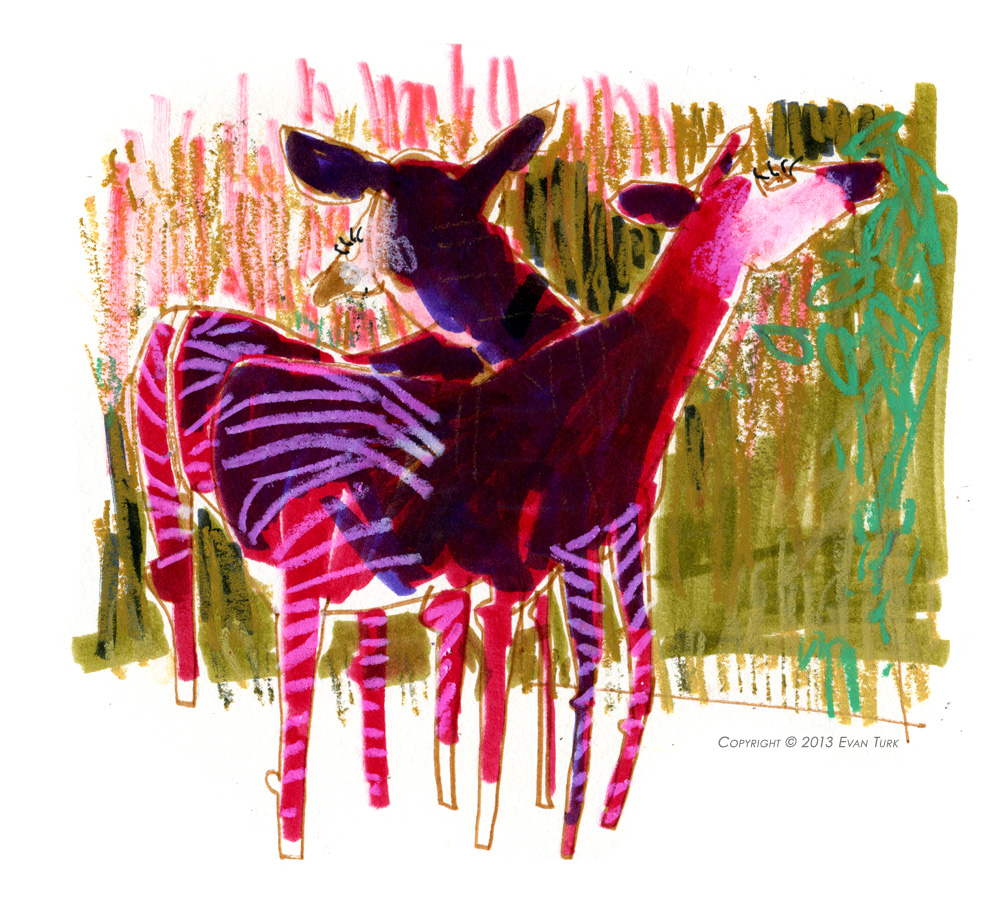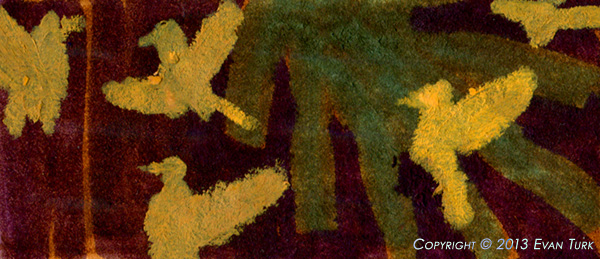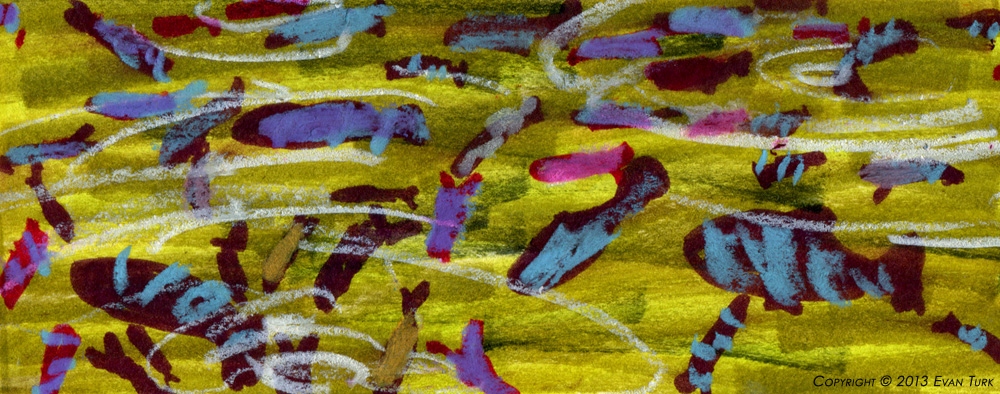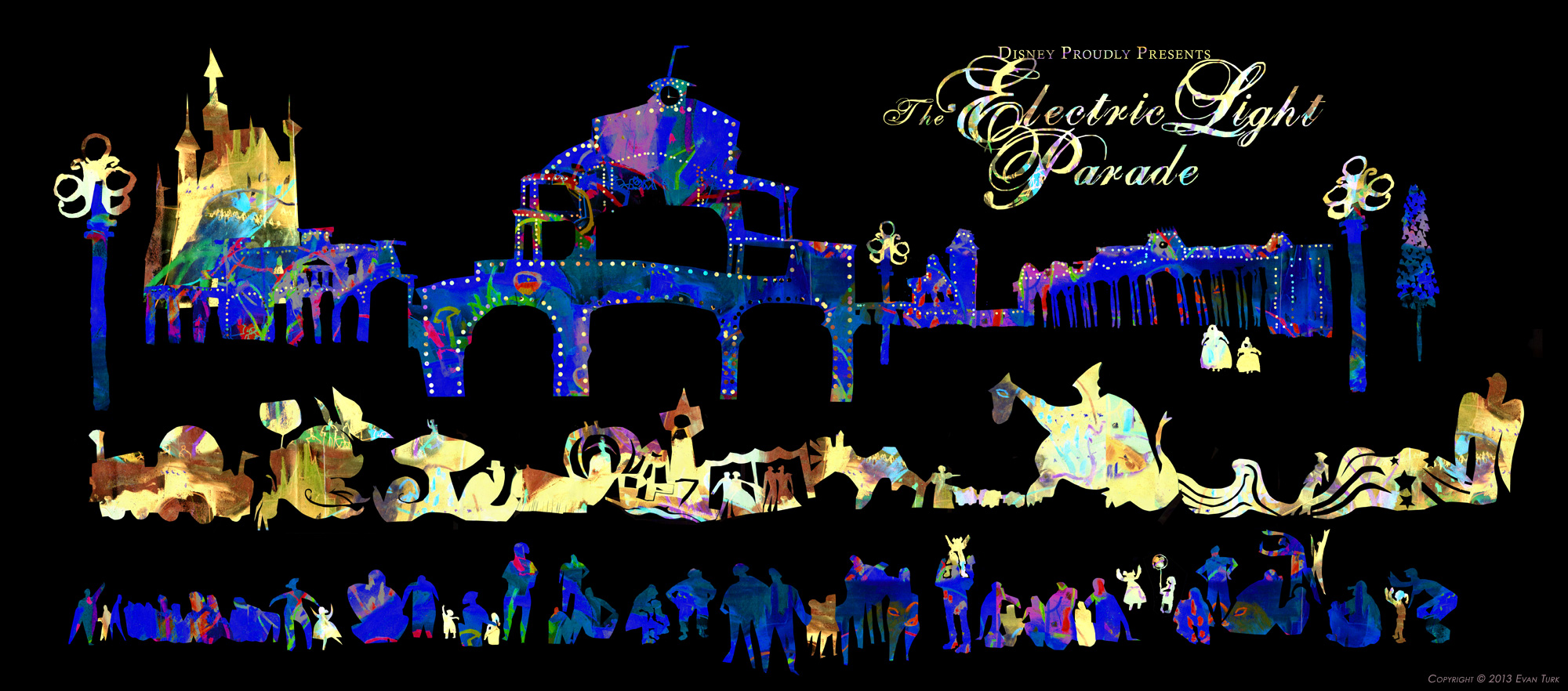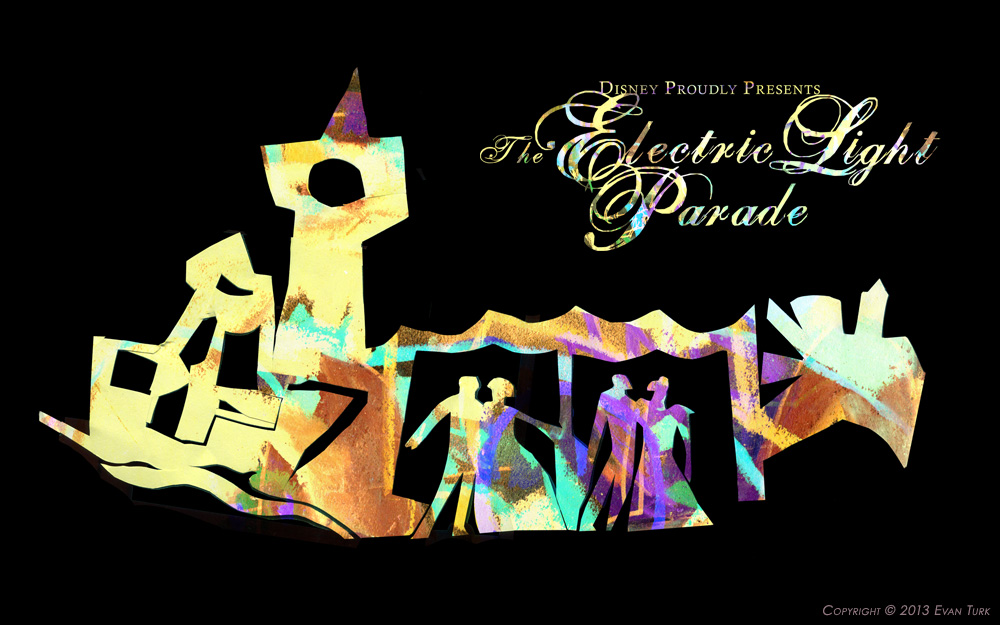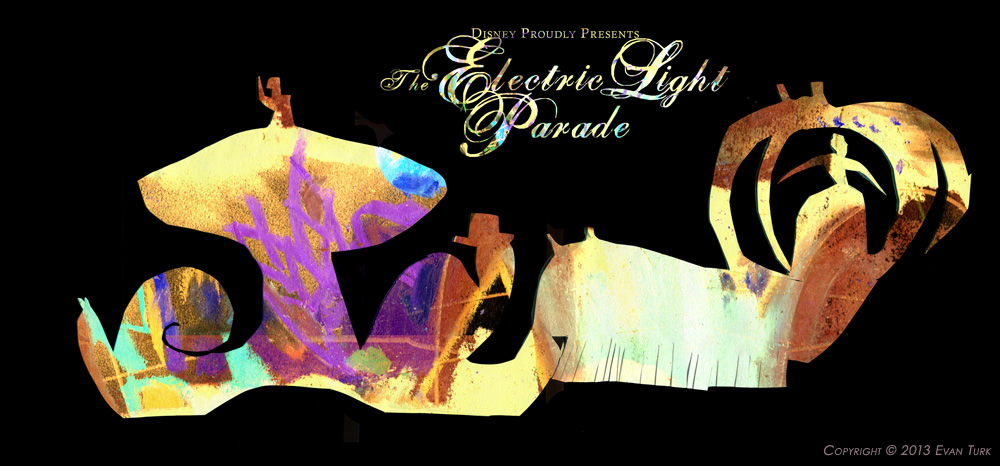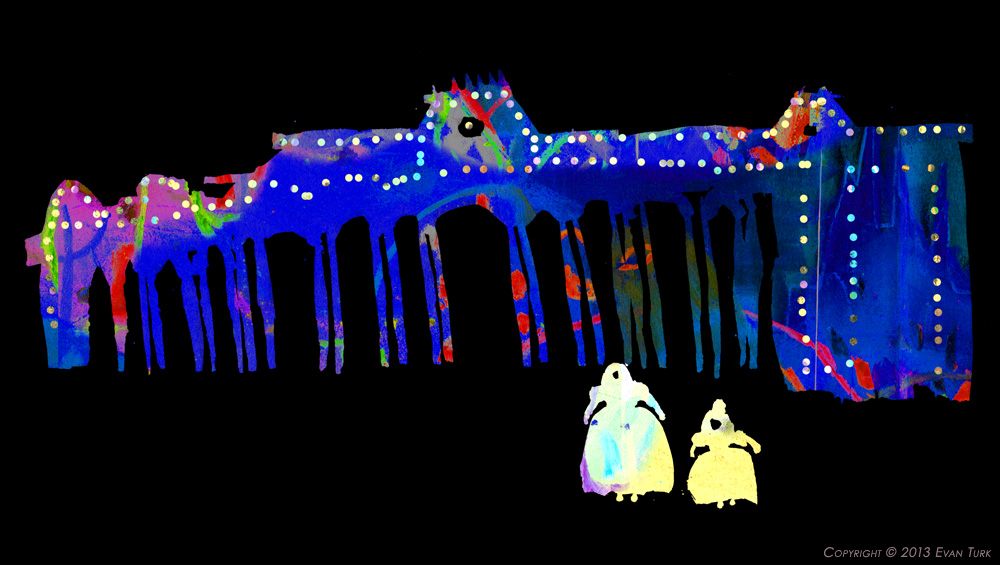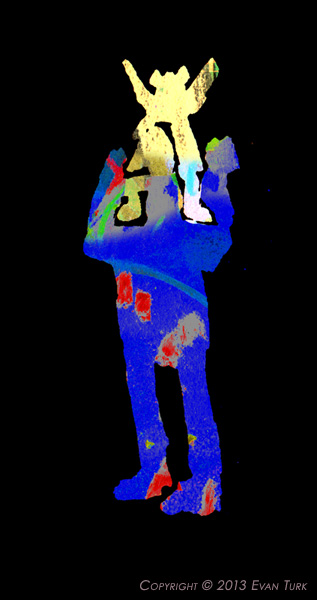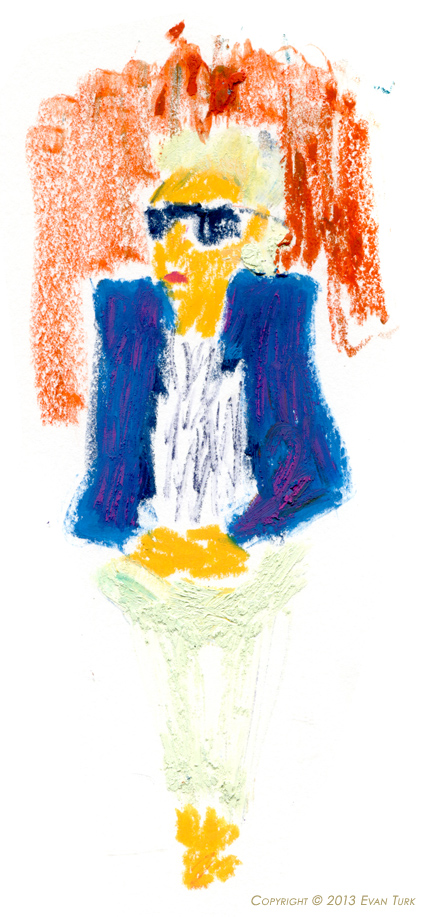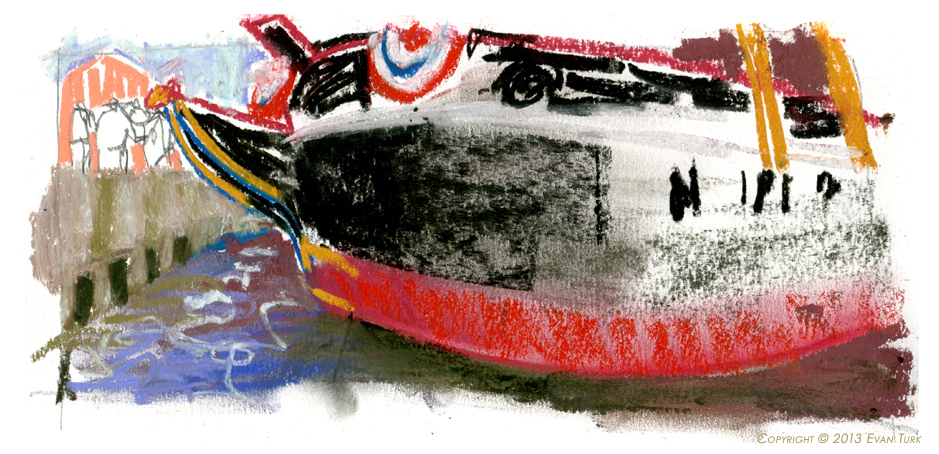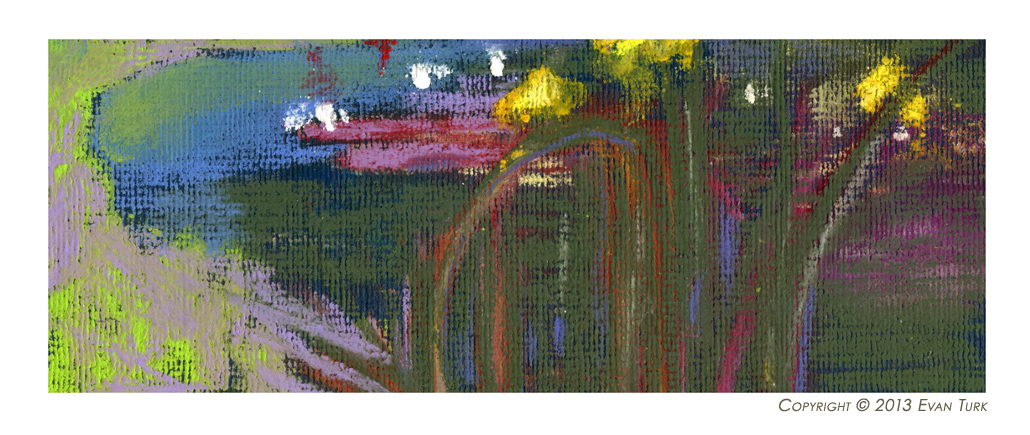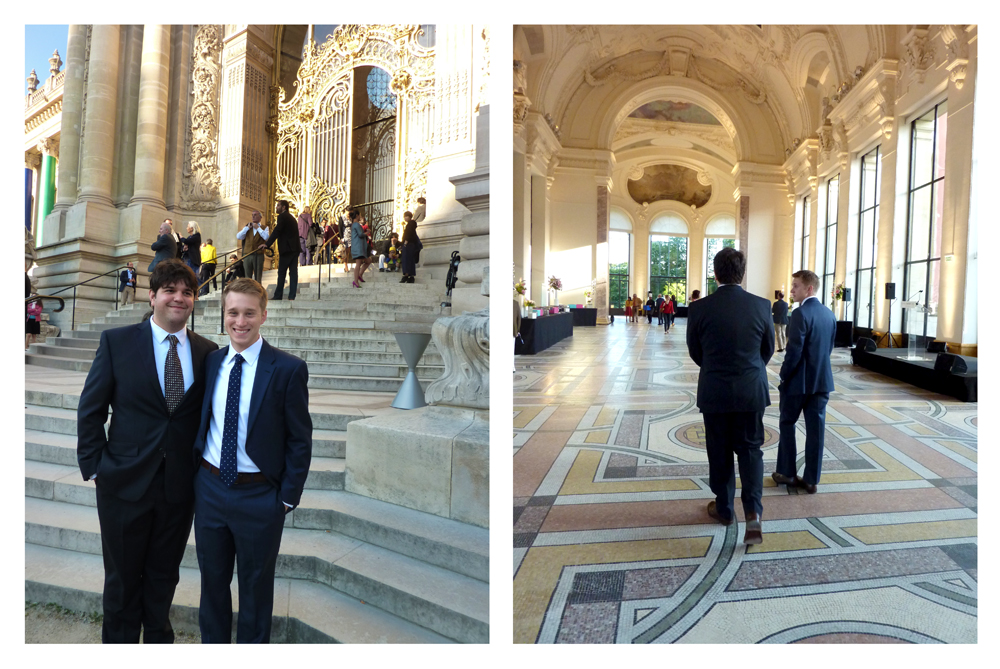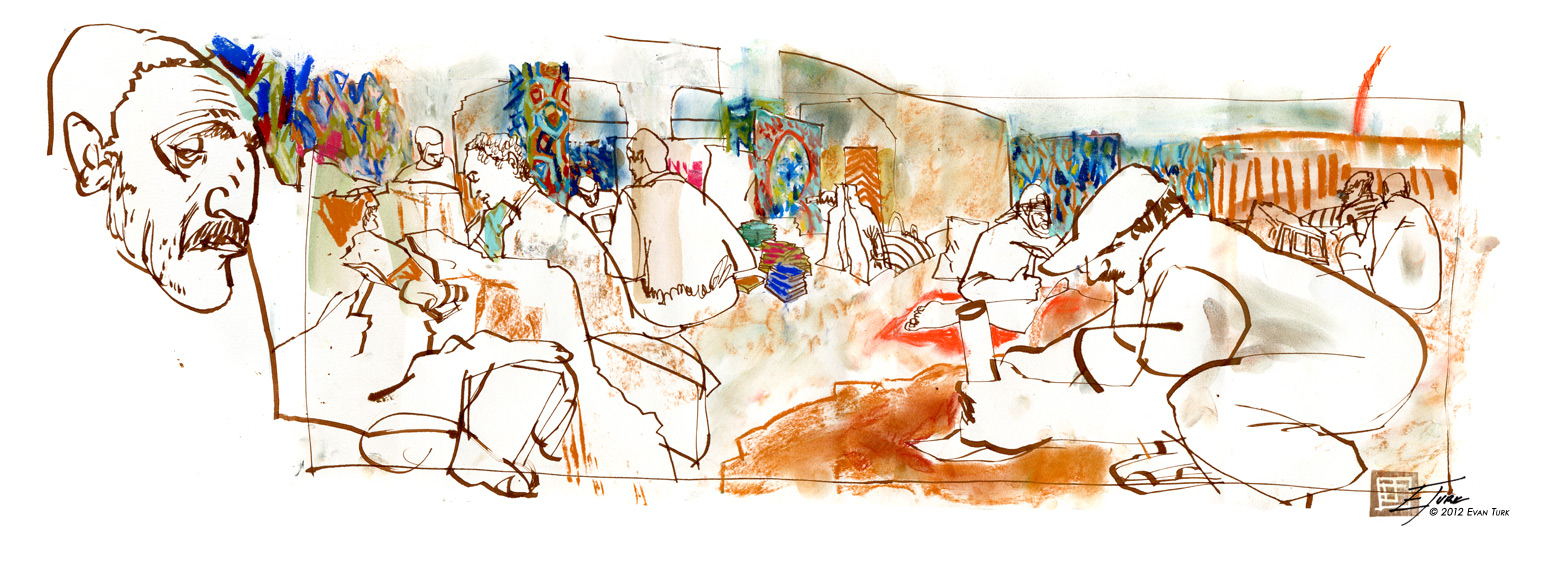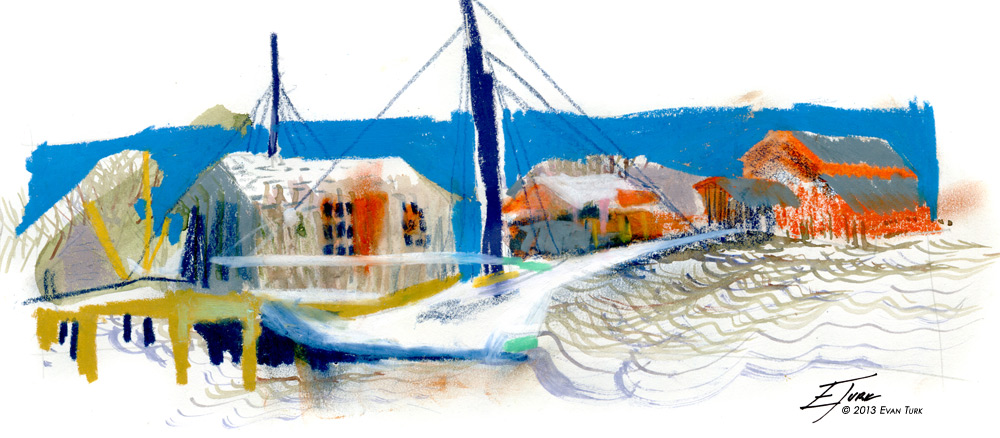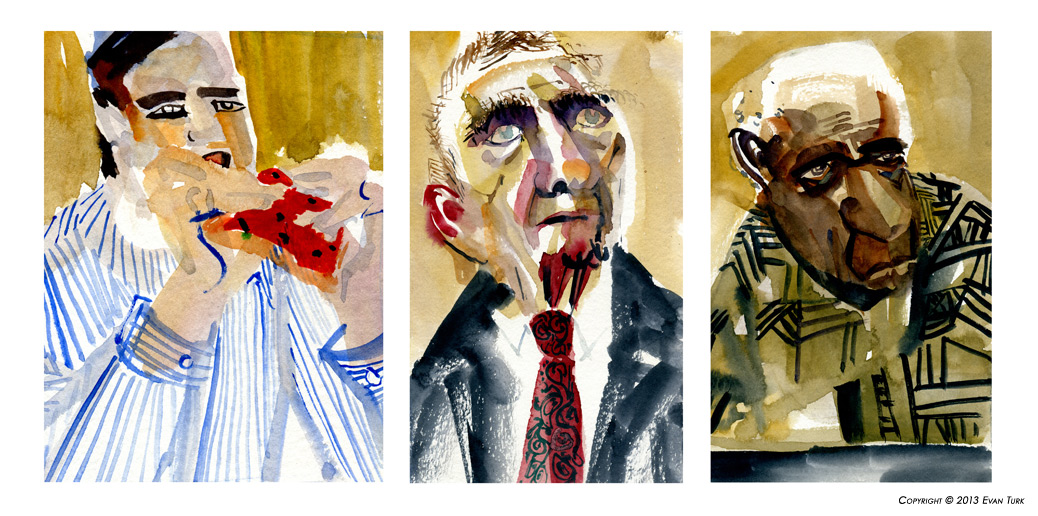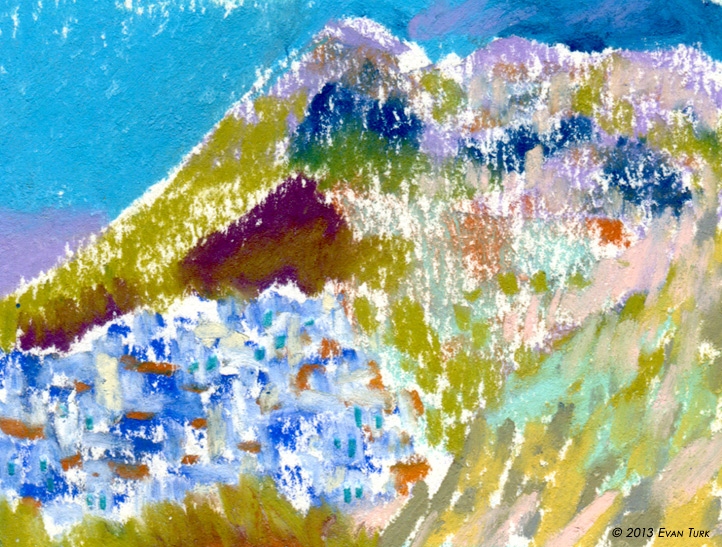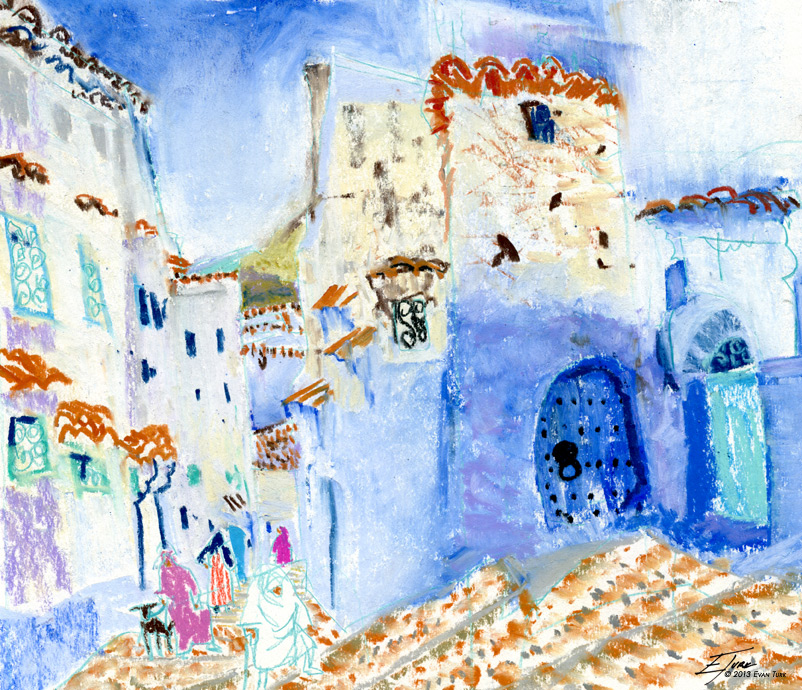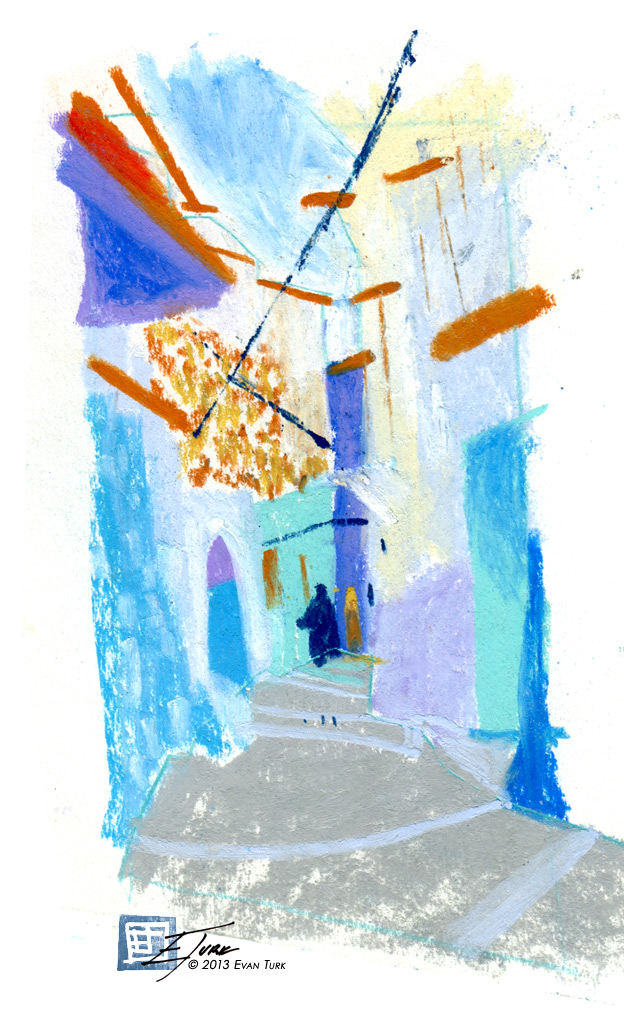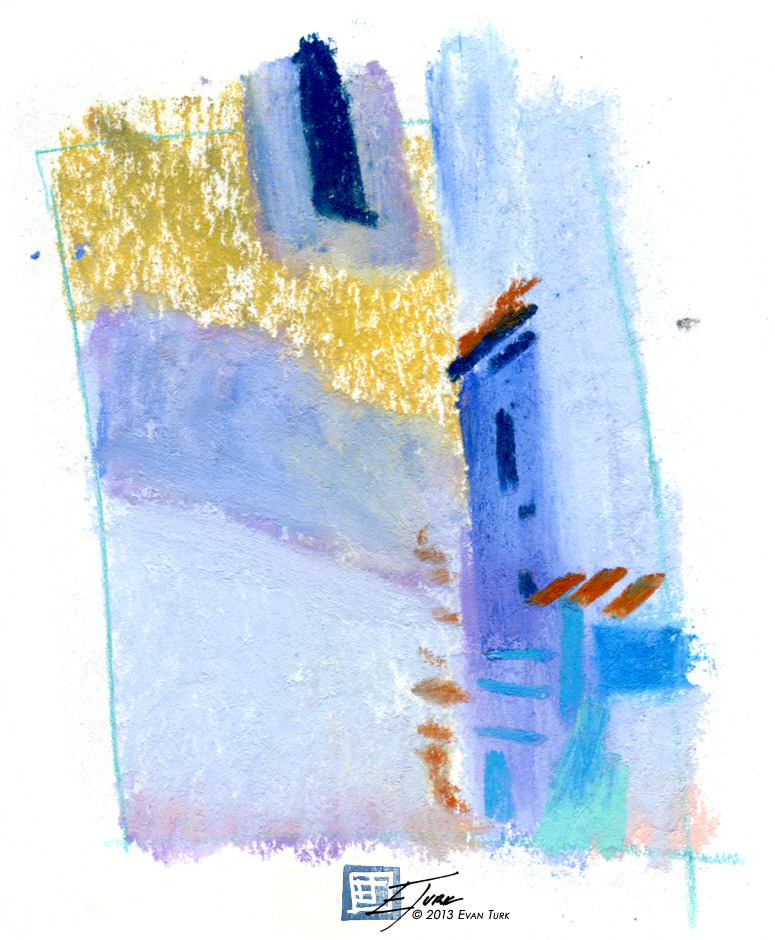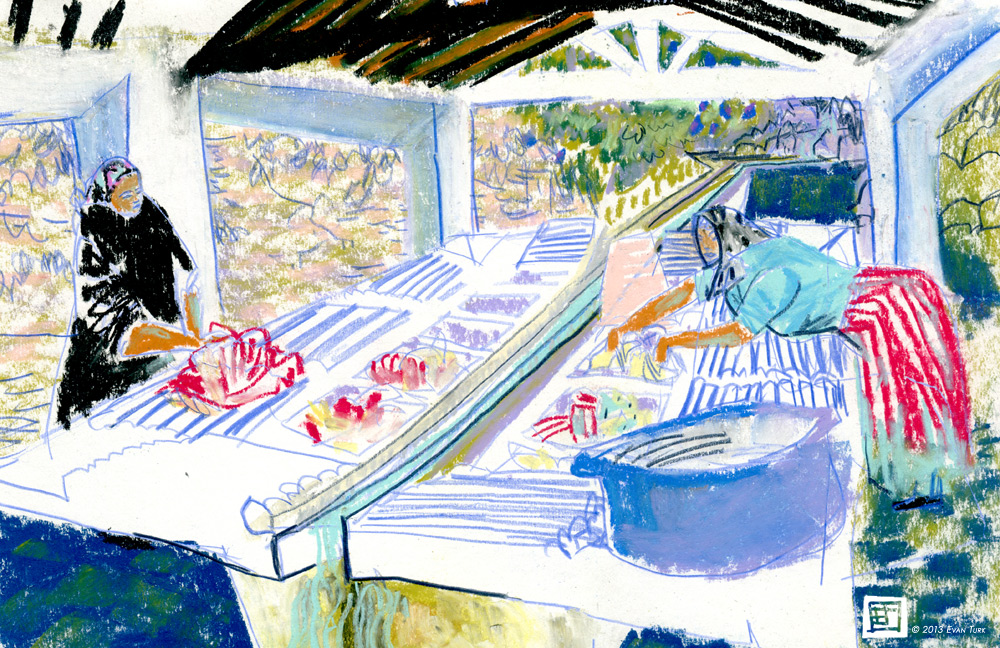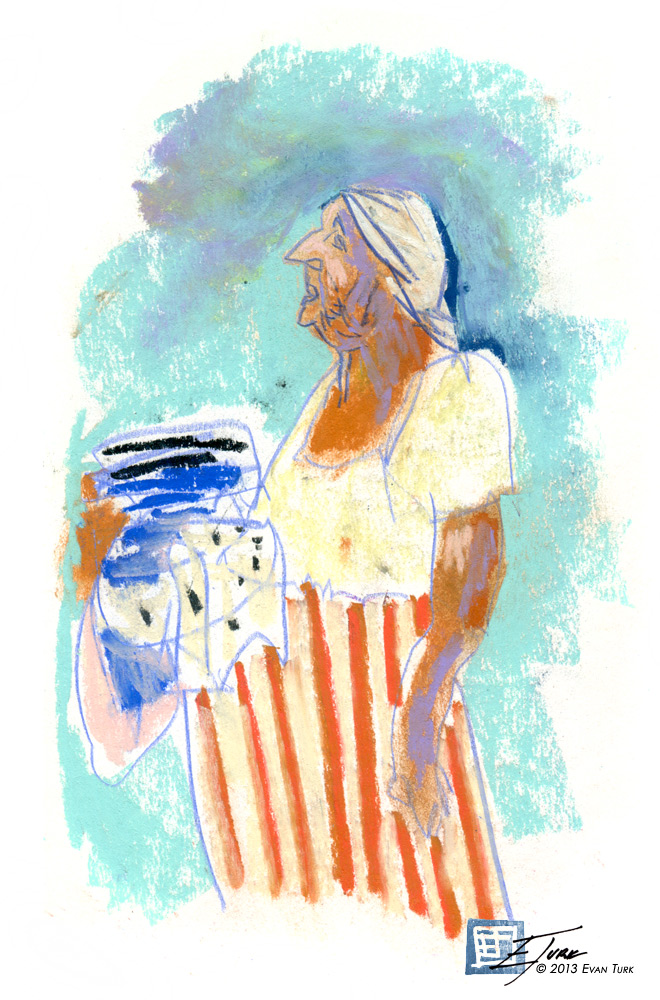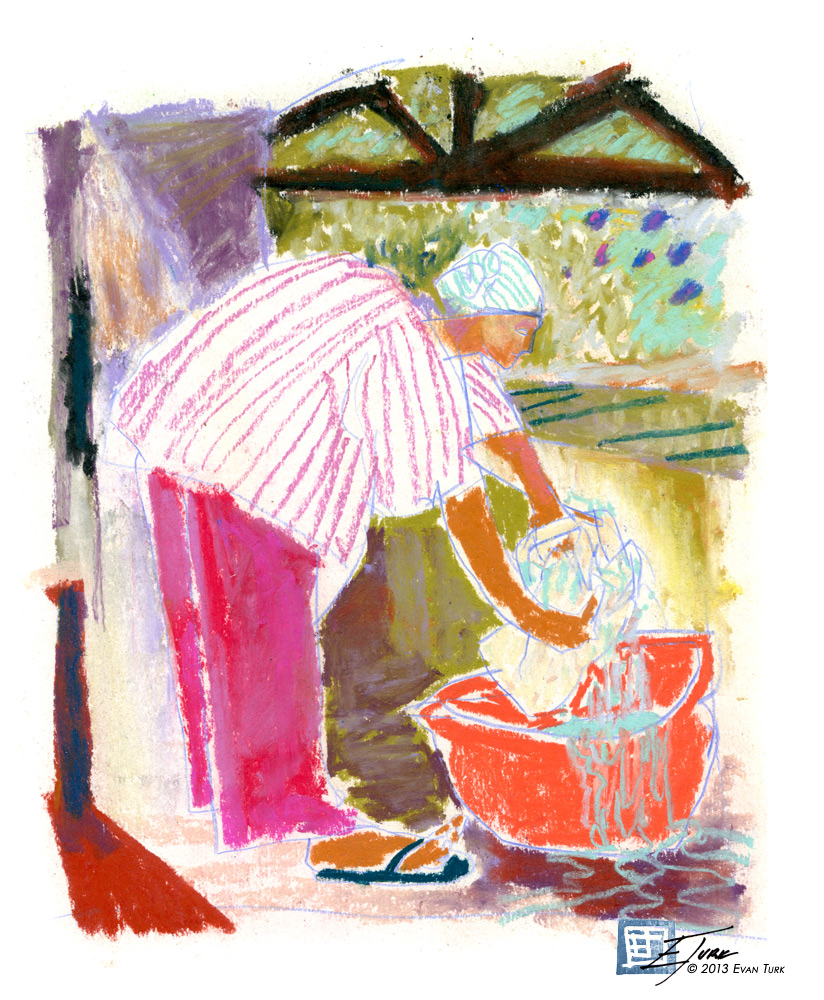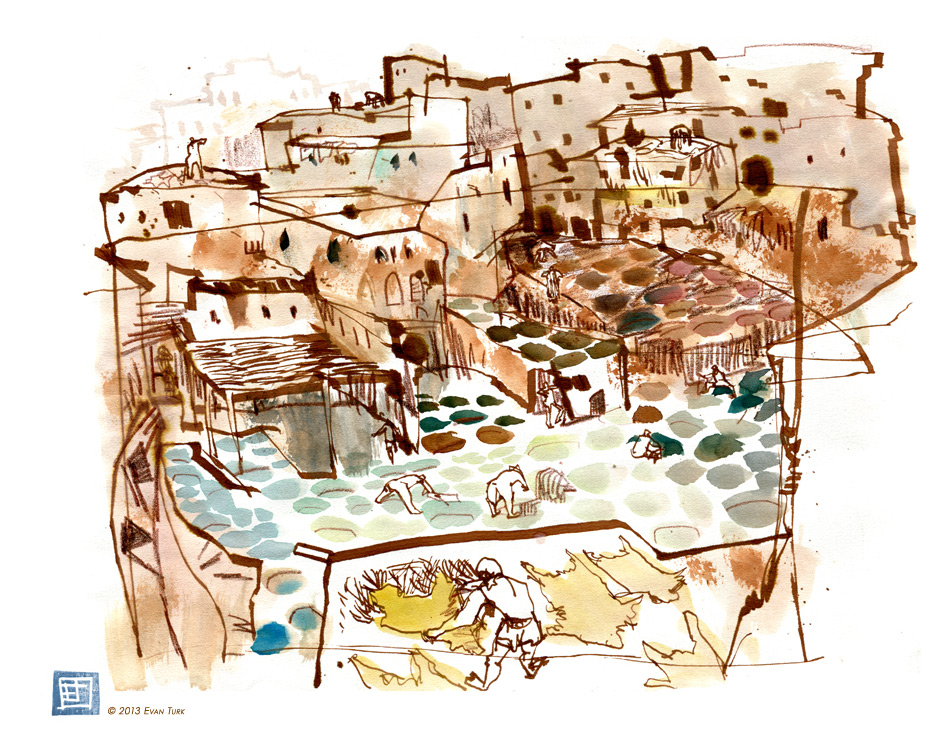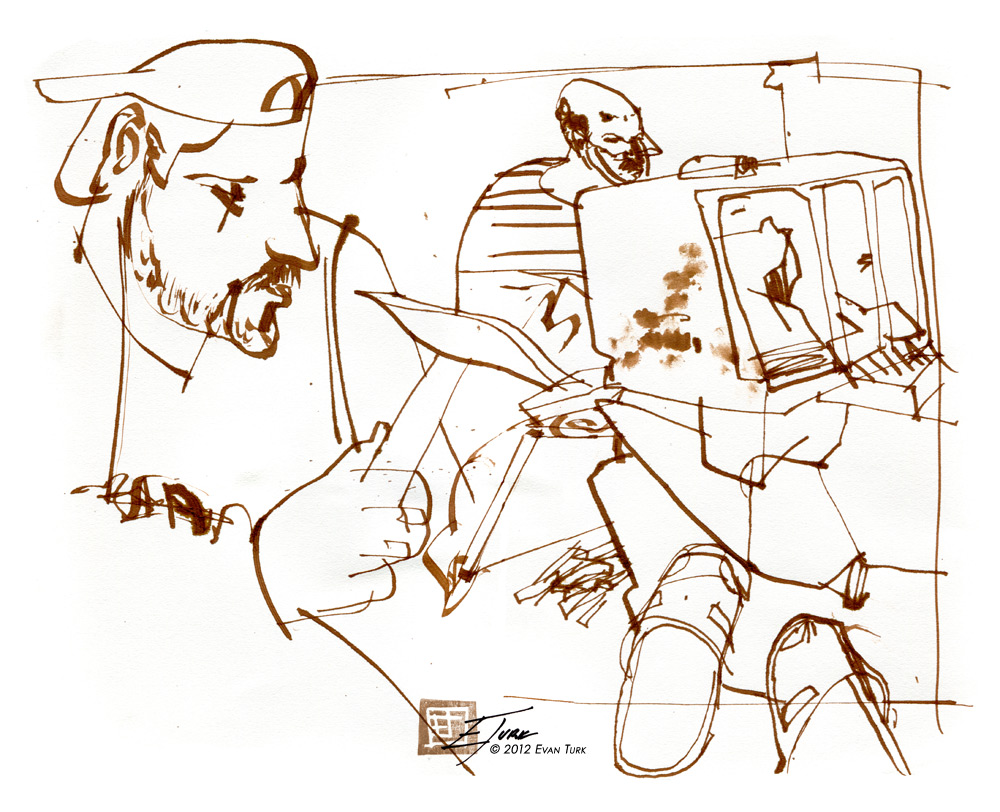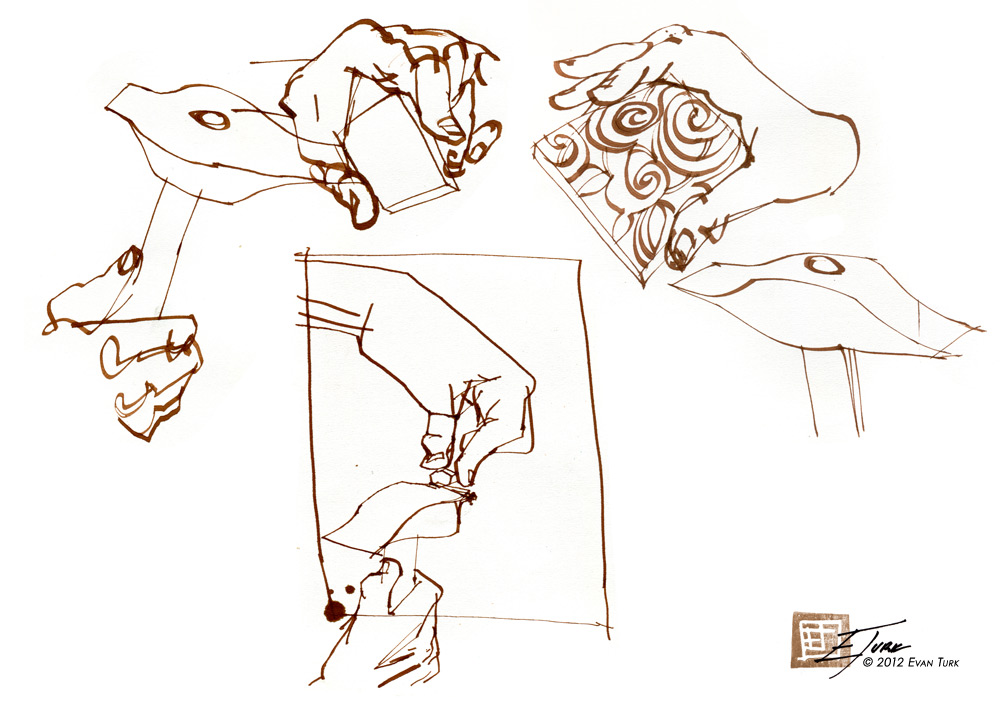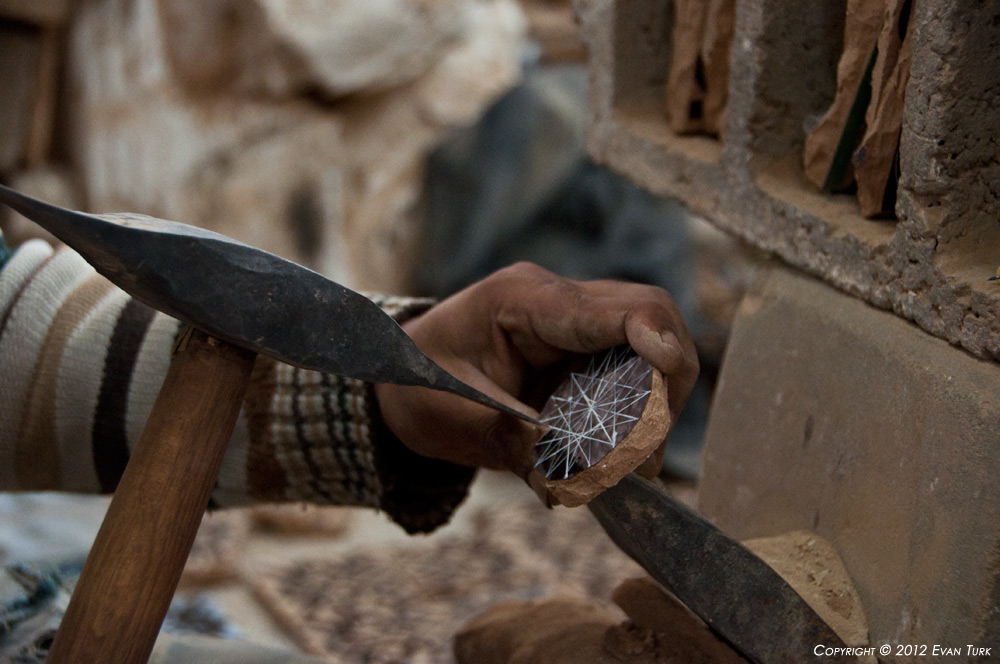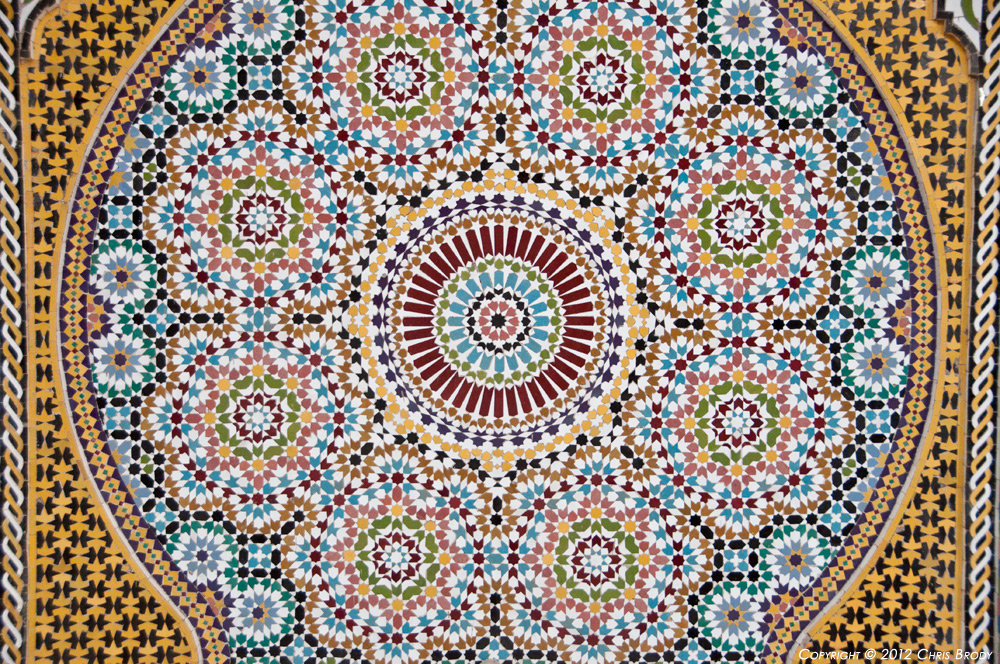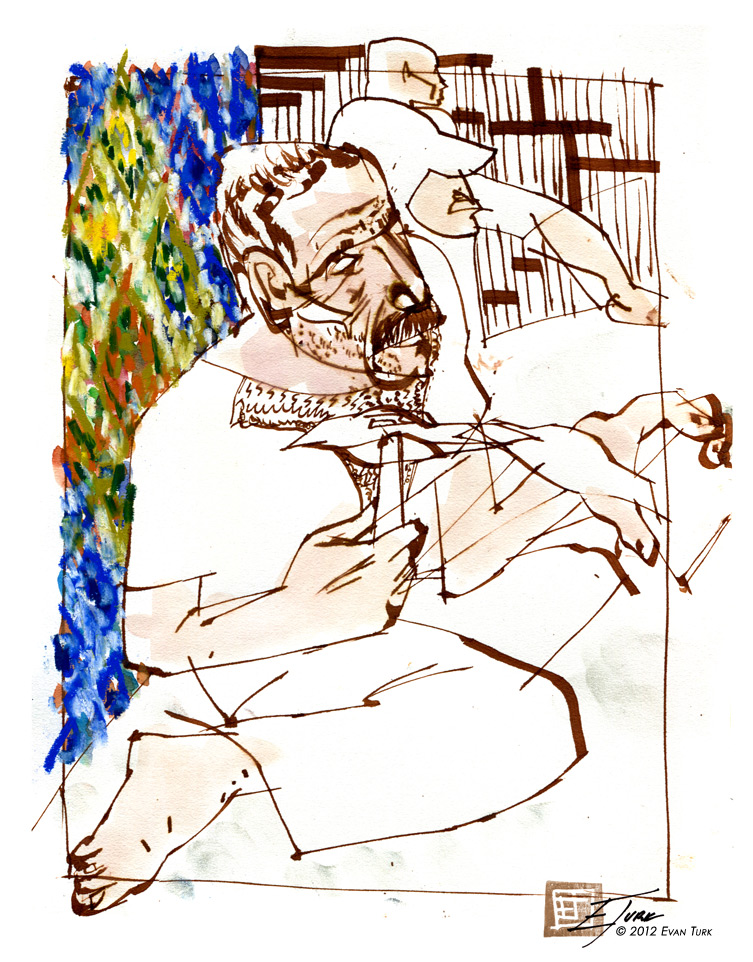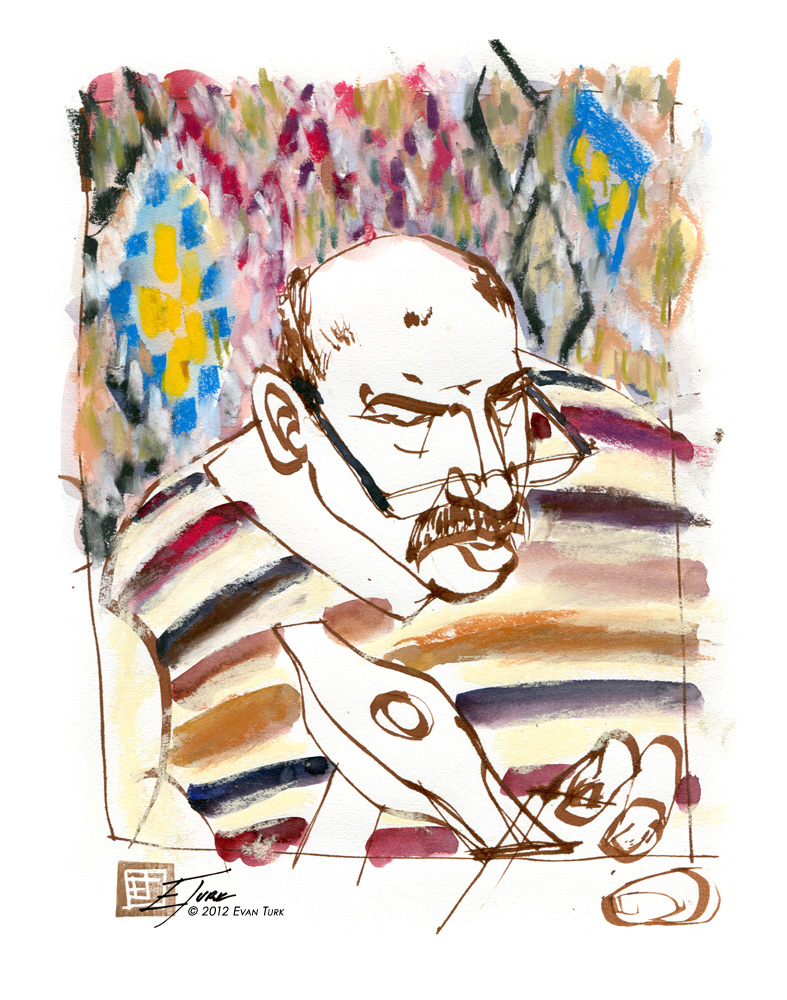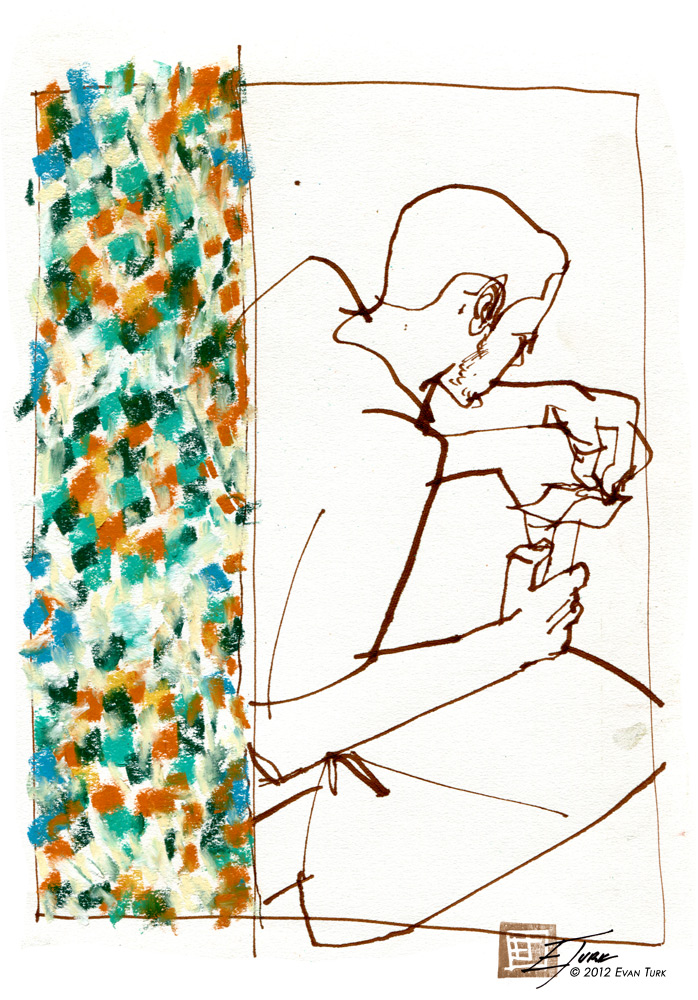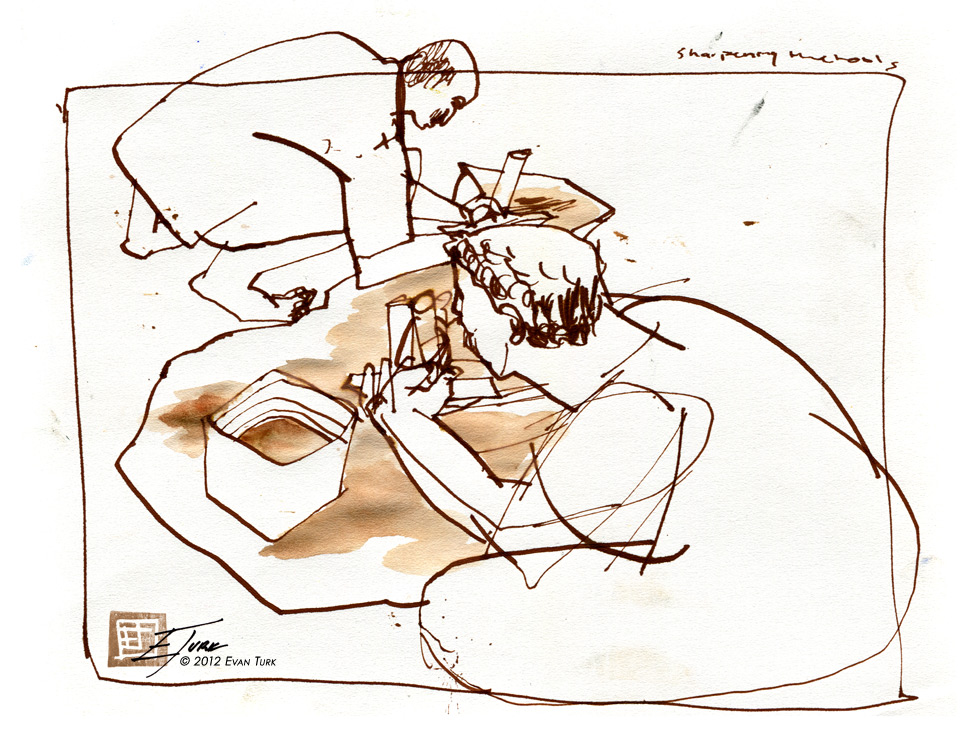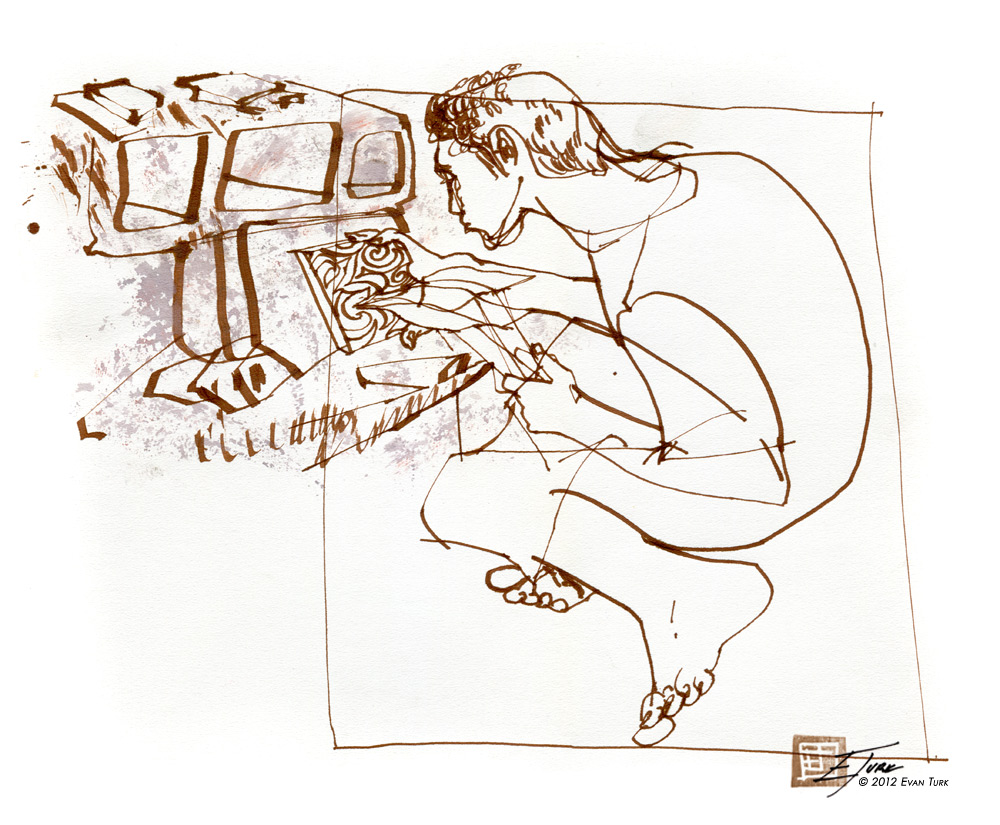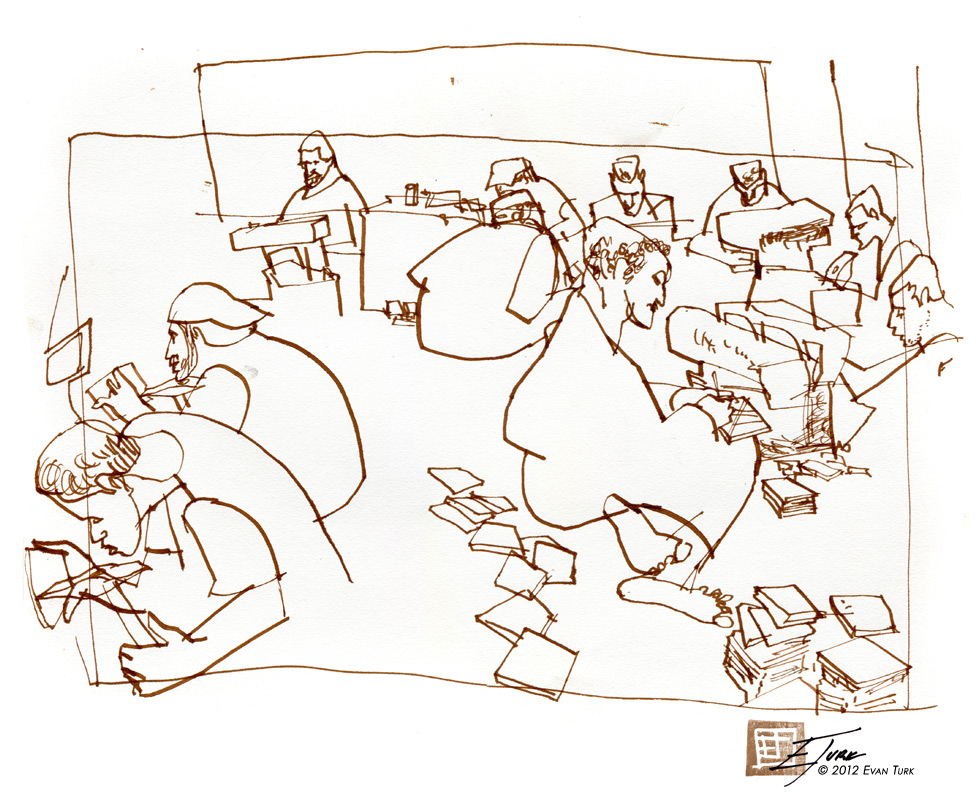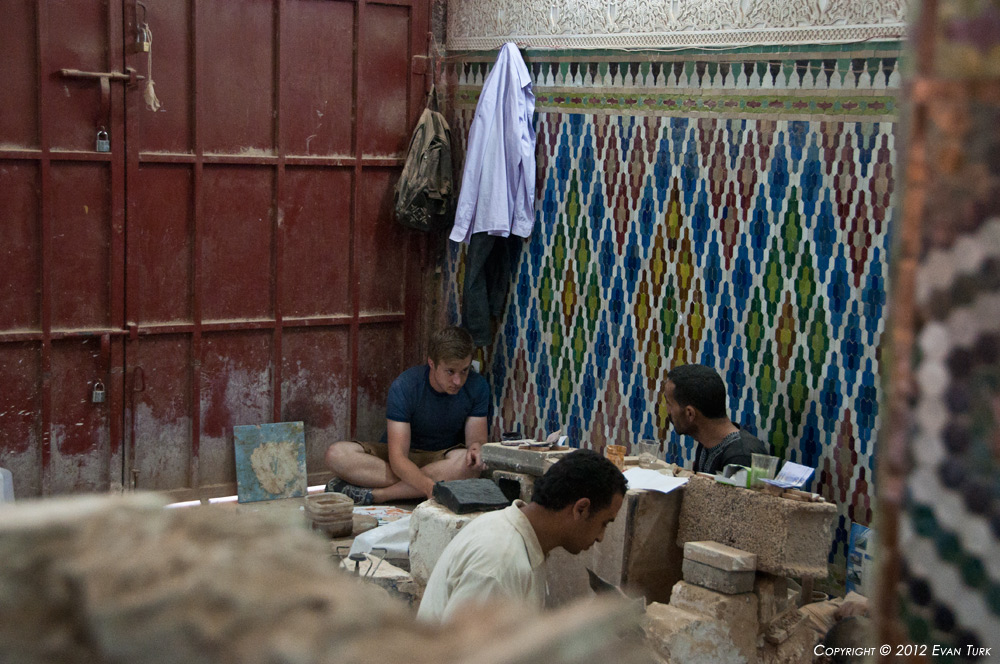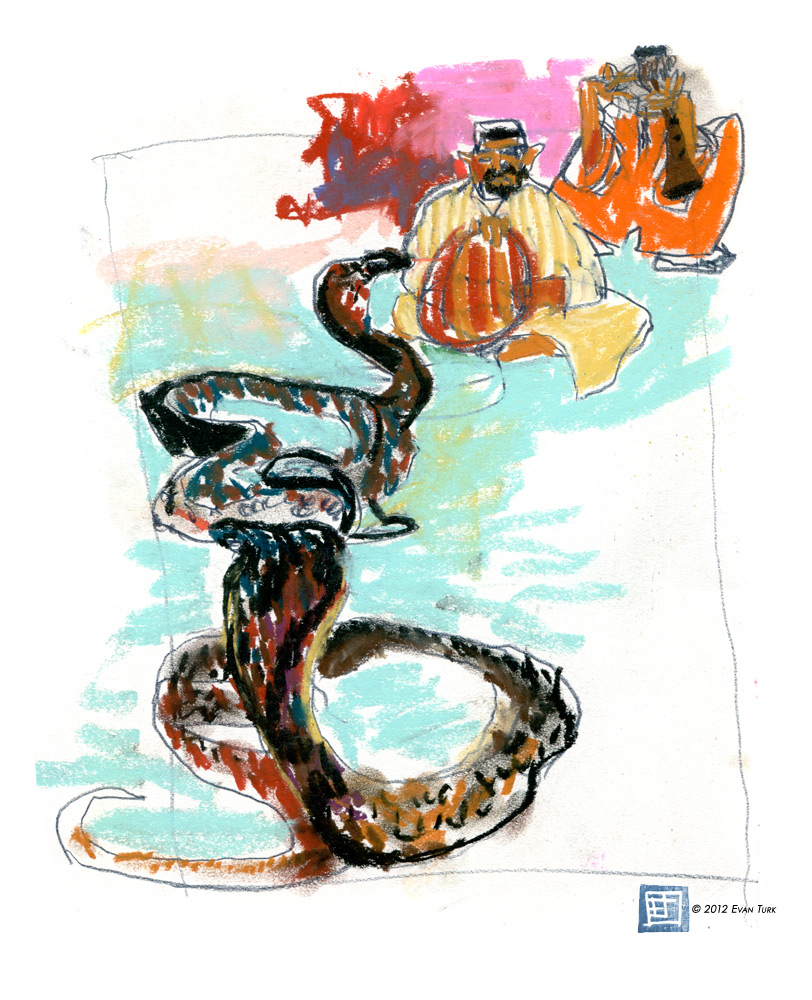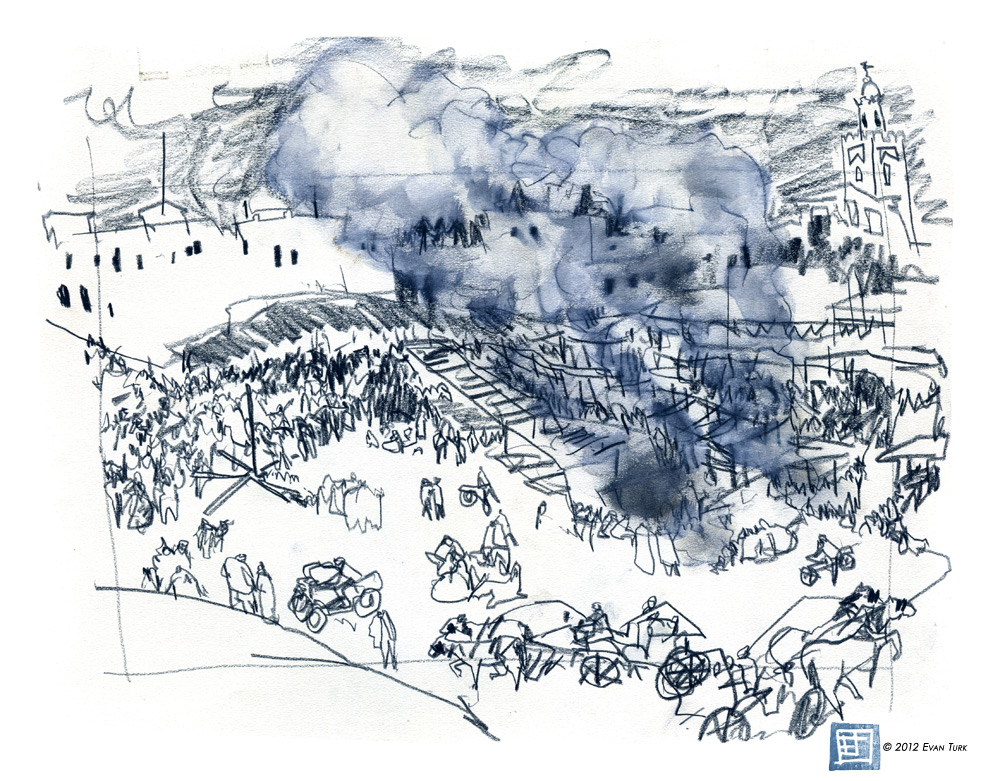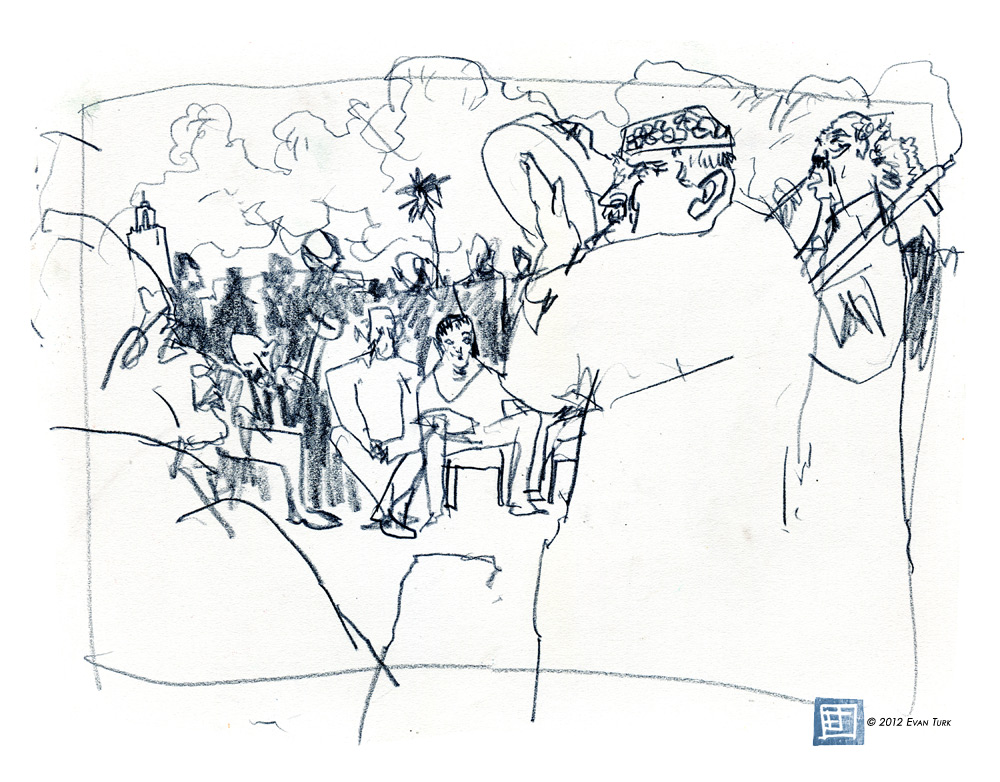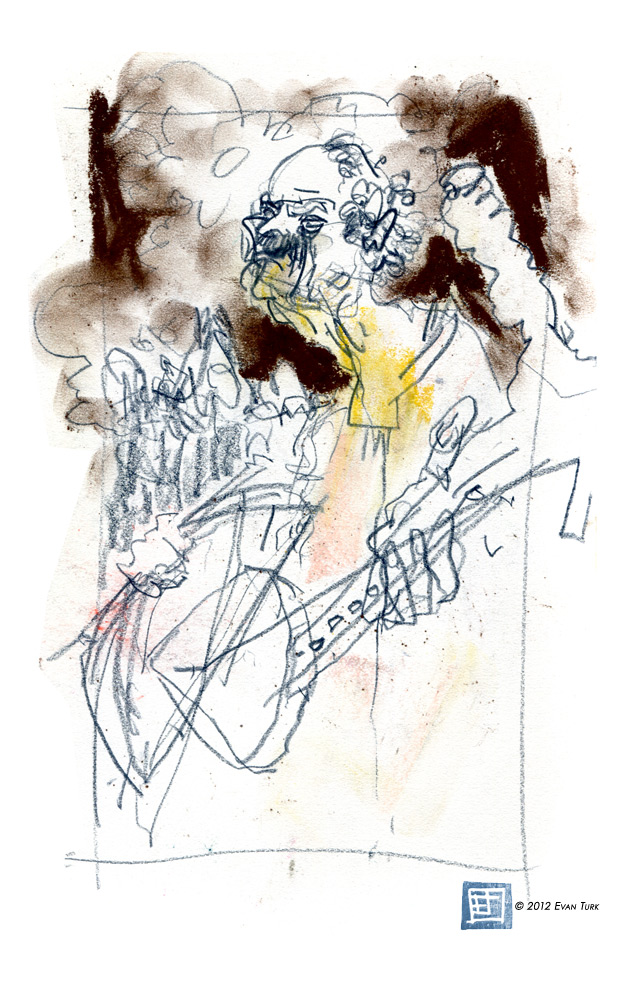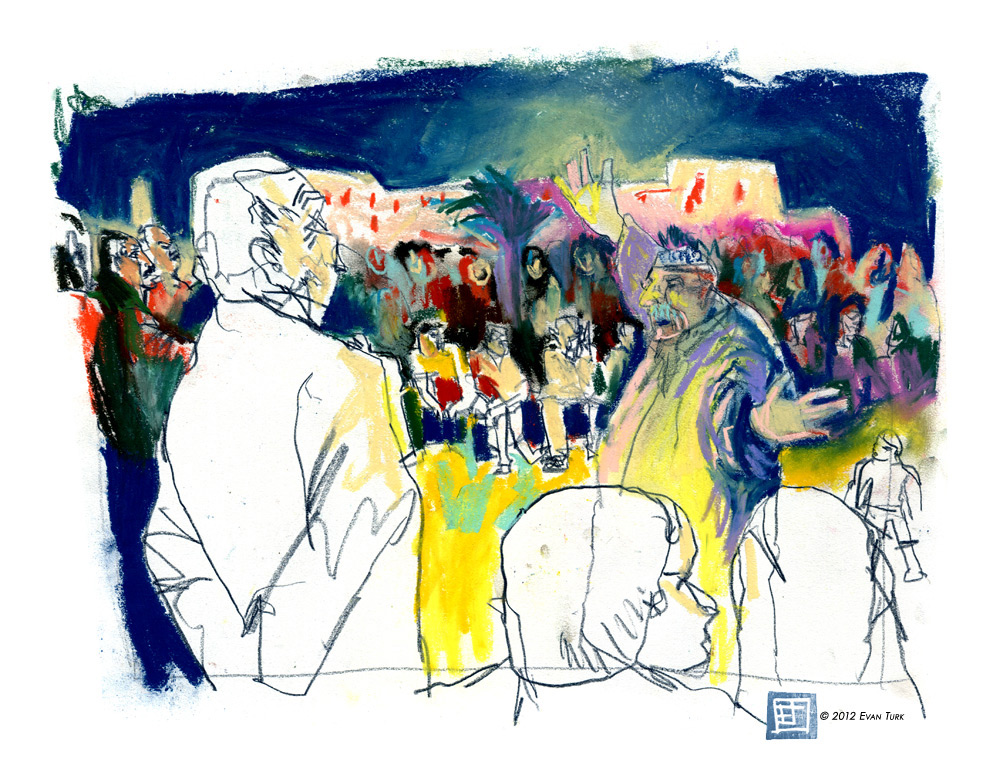“Human beings have always celebrated
resurrection, restoration, renewal and return.
The only thing greater
than the miracle of life itself can sometimes seem to be
the miracle of something brought back to life…"
Ric Burns, Mystic Seaport, July 21, 2013
This July 21st, the 172nd anniversary of the Charles W. Morgan’s first voyage, the last wooden whaleship in the world was lowered back into the Mystic River after 5 years of painstaking restoration.
I have been documenting the restoration of the
Morgan with Dalvero Academy since 2009, so it was a very exciting day for us to be able to witness and document her return to the water. Our show,
Restoring a Past, Charting a Future, will still be on view at Mystic Seaport through this September.
We arrived the day before to see her out on dry land one last time, this time perched at the edge of the pier on her stilts.
The Morgan boasted a fresh new paint job since our last visit, with
numbers on her bow that we knew would soon be submerged in the river.
Most of the ship we had drawn and explored for 4 years would soon be
gone, and I couldn’t help feeling a bit of melancholy along with the
excitement.
The next morning, we arrived early to see the set-up, only to be greeted by giant storm clouds and intermittent downpours. We huddled inside sheds, under overhangs, and under the tents watching
as the ship’s crew prepared for the day ahead.
The crew toasted her rebirth
with a swig of rum, and then passed the bottle to us, like part of the team.
Finally the clouds parted, and crowds began to fill every corner of the shipyard.
Quentin Snediker, the head of the shipyard and our guide through the restoration process, attended to the preparations with stoic calm.
More and more spectators filtered in, buzzing with anticipation.
State troopers surrounded the center platform as curious kayakers began to flock around the river to watch the ceremony.
The speeches began with the president of Mystic Seaport, Stephen C. White, as he proclaimed the magnitude and the significance of the Morgan’s next journey.
Camera crews swirled as the dignitaries gave their speeches, with the keynote from documentary filmmaker, Ric Burns.
The honor of the christening of the ship was given to Sarah Bullard, the great-great-great granddaughter of Charles W. Morgan himself.
Bullard’s granddaughter, little Polly Morgan and her family waved to her from the crowd. She will be the next generation to inherit the Morgan and her legacy.
The snowy haired duo, Quentin Snediker and Sarah Bullard, stood beneath crowning bow of the ship, like proud parents sending their daughter off into the world.
The ship would be christened with water from each of the seas the Morgan sailed, and a drop of rum for luck.
With a crash, Bullard inaugurated the Morgan's descent into the water, and a cheer erupted from the shipyard and the river.
We all watched as she began to disappear into the river, and I noticed Quentin looking on. Only he and the shipwrights could know the thousands of hours and hands that went into carefully shaping each timber and plank of wood that now disappeared beneath the water, gently cradling the ship and keeping her afloat. At the end of her slow descent, the numbers on her bow vanished, one by one into the water. As the '9' broke the surface, the call went out "She is afloat!" and again the crowd burst into raucous applause.
As she went beneath the water, I imagined all the hands and souls that left their mark and went down with her. I watched her there, half submerged, hoping that the generations to come will know how far her depths reach below that water.
